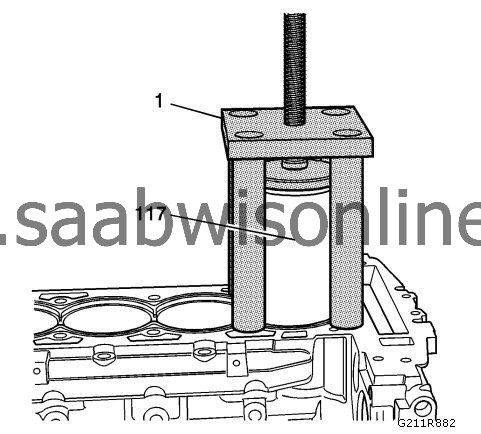Cylinder Sleeve Installation
|
|
Cylinder Sleeve Installation
|
The
EN-45680-861
trim tool assembly (2) contains or requires the following components to complete 2.0L, 86 mm cylinder sleeve trimming:
|
•
|
Debris collector (3) with
EN-45680-865
filter.
|
|
•
|
Drill motor with 1/2 inch chuck, 1 1/8 hp, 7 amps, triple gear reduction, and a 450-600 RPM rotational speed in a clockwise direction
|
|
•
|
EN-45680-869
bore cutter bit and screw.
|
|
•
|
EN-45680-899
Bore trimmer pilot , white in color
|
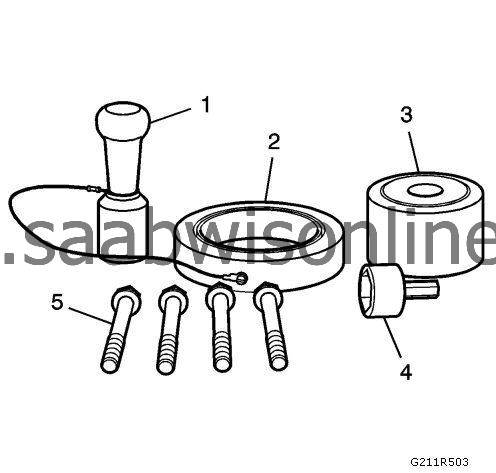
|
•
|
EN-45680-862
Gauge ring assembly.
|
|
|
•
|
Trim tool preloader (1)
|
|
•
|
EN-45680-412
Set Gauge Ring (2)
|
|
•
|
EN-45680-863
metal shavings catch plug (3)
|
|
•
|
EN-45680-866
drive adapter (4)
|
|
1.
|
 Warning
Warning
|
|
Do not bore or hone the cylinder bore sleeve. The cylinder bore sleeve inside diameter (I.D) is fully machined and honed to size and is optimally finished as shipped. Any attempt to modify this factory-produced sizing and finish with additional boring and honing will lead to engine damage, excessive noise or abnormal oil consumption.
|
|
|
|
|
|
After installing the NEW cylinder bore sleeve(s) into the engine block, trim the excess material from the cylinder bore sleeve flange.
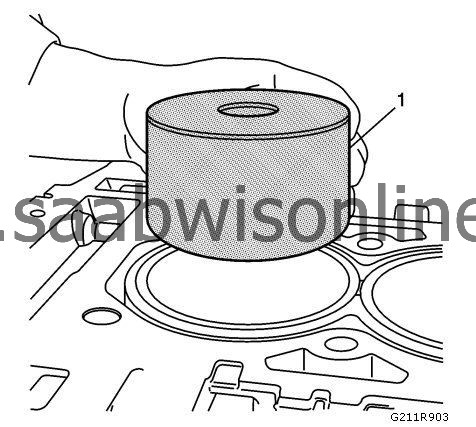
|
|
2.
|
 Warning
Warning
|
|
Ensure that all the metal particles are collected in order to prevent internal damage to the engine or bearings.
|
|
|
|
|
|
Place
EN-45680-863
metal shaving catch plug (1) into the cylinder bore sleeve to be trimmed. Position the top approximately 3.0 mm (0.12 in) below the top surface of the cylinder bore sleeve.
|
|
3.
|
Place an additional
EN-45680-863
metal shaving catch plug into all remaining cylinder bore sleeves.
|
|
4.
|
 Warning
Warning
|
|
Installing the metal shaving catch plug deeper than the recommended depth will create a decrease in vacuum system performance. A decrease in vacuum system performance will cause metal shavings to enter the engine and cause engine failure.
|
|
|
|
|
|
 Warning
Warning
|
|
Installing the metal shaving catch plug above the recommended depth will cause damage to the metal shaving catch plug.
|
|
|
|
|
|
Ensure that the
EN-45680-863
metal shaving catch plug (1) is 3.0 mm (0.12 in) below the top surface of the cylinder bore sleeve.
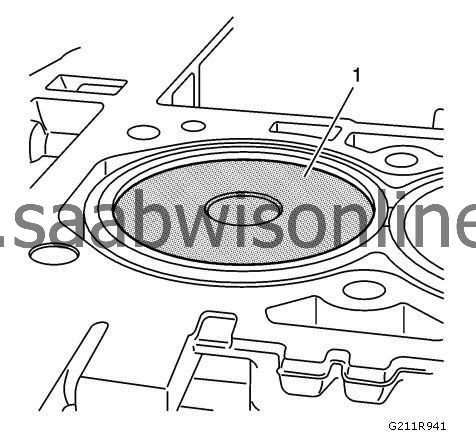
|
|
5.
|
Ensure that the correct bore trimmer pilot and cutter bit are installed on the
EN-45680-861
trimmer base assembly :
|
|
|
•
|
EN-45680-869
cutter bit and screw
|
|
|
•
|
EN-45680-899
trimmer pilot, 86 mm sleeve
|
|
6.
|
|
Note
|
|
Before using the trim tool assembly, the height of the cutting blades must be set to the proper specification. The proper specification is that the cylinder bore sleeve flange must be flush to +0.02 mm (0.0008 in) above the block deck surface.
|
The groove side of the set gauge ring (1) on the
EN-45680-862
gage ring assembly should be positioned upward on a flat surface.
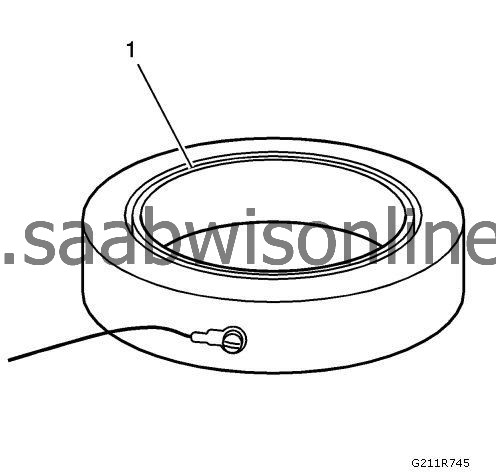
|
|
7.
|
|
Note
|
|
Ensure that the set gauge ring surfaces are clean.
|
Carefully position the
EN-45680-861
trim tool assembly onto the set gauge ring.
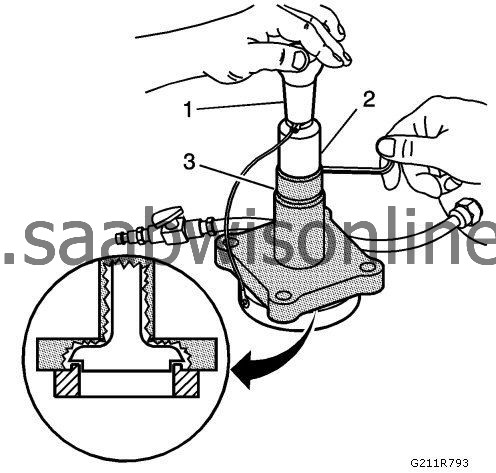
|
|
8.
|
Loosen the shaft collar screw (2).
|
|
9.
|
Push the shaft collar (2) downward using the trim tool preloader (1) on the
EN-45680-862
gage ring assembly until the shaft collar is positioned against the top of the flange bearing (3).
|
|
10.
|
|
Note
|
|
Once this procedure is done, it is not necessary to reset the trim tool assembly height until the blades are worn, damaged, or replaced.
|
Apply downward pressure on the collar and inner drive shaft using the trim tool preloader (1), then tighten the shaft collar screw to
19 Nm (14 lb ft)
.
|
|
11.
|
Place the
EN-45680-861
trim tool assembly onto the cylinder to be trimmed with the directional arrow (1) pointing in line with the crankshaft centerline and the front of the block.
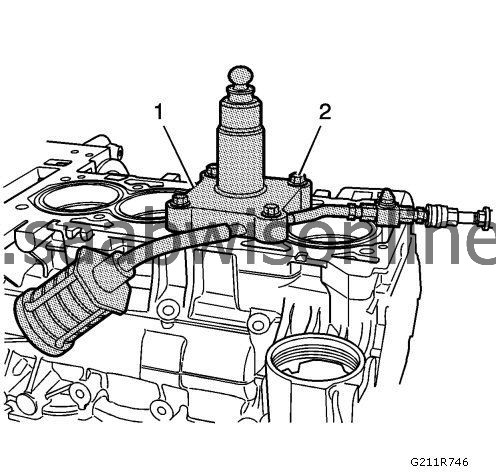
|
|
12.
|
Install the
EN-45680-864 (2)
four bolts into the cylinder head bolt holes and tighten to
20 Nm (15 lb ft)
.
|
|
13.
|
 Warning
Warning
|
|
For proper tool operation, a drill motor with a 1/2 inch chuck, 1 1/8 hp, 7 amps, triple gear reduction, and a 450-600 RPM rotational speed in a clockwise direction must be used. If the proper drill motor is not used, damage to the cylinder bore sleeve will occur.
|
|
|
|
|
|
Fasten the drive adapter EN-45680-866 (1) into the drill chuck.
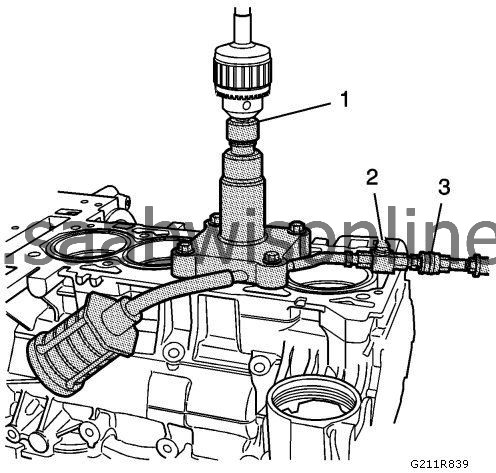
|
|
14.
|
 Warning
Warning
|
|
Ensure that there are no crimps in the air feed hose or the vacuum hose. Crimps in the hose may cause metal shavings to exit the cutting tool in any direction, causing engine damage.
|
|
|
|
|
|
Connect a compressed air supply 517.10-861.84 kPa (75-125 psi) to the male quick connect (3) located on
EN-45680-861
trim tool assembly. Turn the compressed air valve (2) to the open position. This starts the venturi vacuum system that will catch the metal shavings.
|
|
15.
|
|
Note
|
|
It should not take longer than 15 seconds to complete the trimming procedure. If it does, the trimming bits must be repositioned to a new cutting surface.
|
Place the
EN-45680-866
drive adapter and drill assembly (1) vertically onto the drive adapter end of
EN-45680-861
trim tool assembly. Do not apply downward force on the drill until full rotational speed has been reached. After reaching full rotational speed, apply firm downward force until the cutting action is complete.
|
|
16.
|
Remove the
EN-45680-866
drive adapter (1) and drill assembly from the
EN-45680-861
trim tool assembly.
|
|
17.
|
Turn off the compressed air valve (2).
|
|
18.
|
Remove the
EN-45680-861
trim tool assembly from the engine block.
|
|
19.
|
Remove any material shavings that may be found on the
EN-45680-863
metal shaving catch plug.
|
|
20.
|
Wipe the cylinder bore sleeve and surrounding areas free of any powder residue and then remove the
EN-45680-863
metal shaving catch plug.
|
|
21.
|
Install a straight edge (2) on the cylinder block perpendicular to the crankshaft center line.
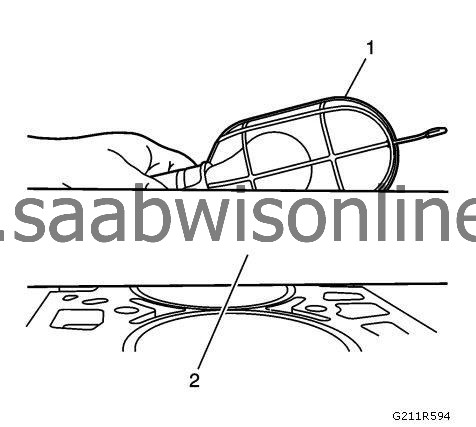
|
|
22.
|
Using a light (1), illuminate the backside of the straight edge.
|
|
23.
|
Looking at the front of the straight edge (1), check to see if light is protruding through the bottom of the straight edge and the top of the cylinder bore sleeve flange. If light is present on either side or both sides of the cylinder bore sleeve (2), the cylinder bore sleeve is cut incorrectly and a new cylinder bore sleeve needs to be installed.
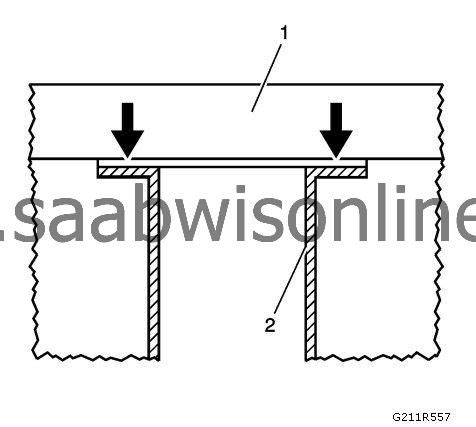
|
|
24.
|
Looking at the front of the straight edge (1), check to see if light is protruding through the bottom of the straight edge and the top of the cylinder block deck surface. If light is present on both sides of the cylinder block, the cylinder bore sleeve (2) is cut correctly.
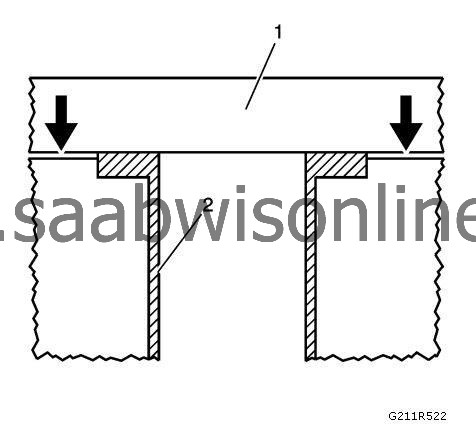
|
|
25.
|
Proceed to the next bore sleeve to be trimmed repeating steps 10-23 if necessary.
|
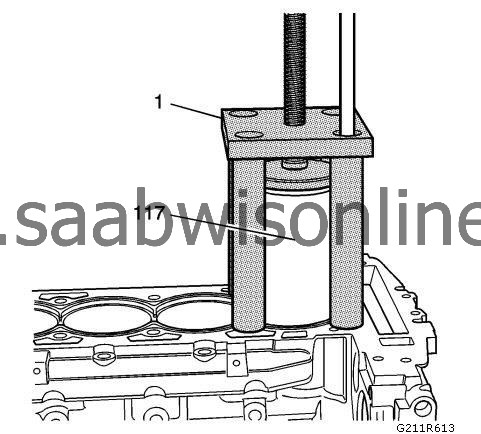

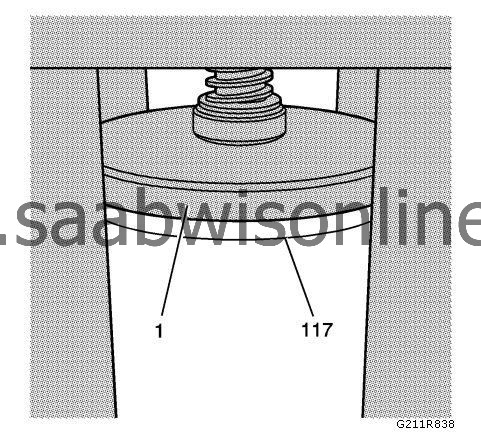

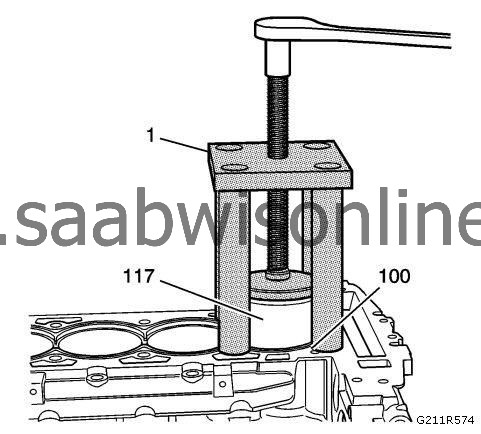
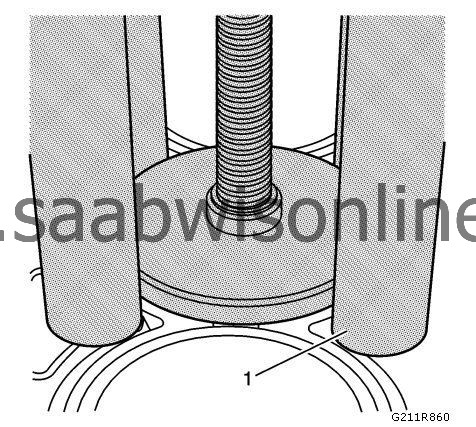

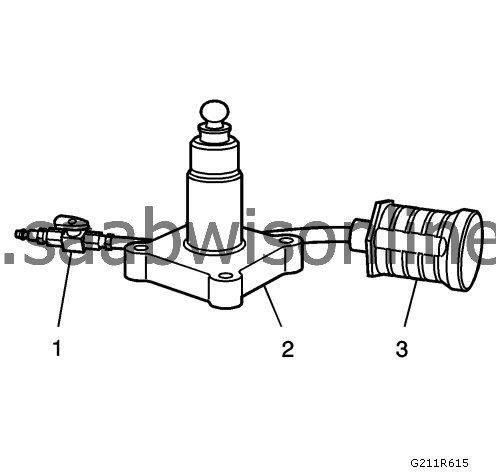











 Warning
Warning
